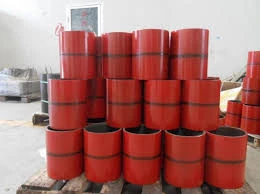- Afrikaans
- Albanian
- Amharic
- Arabic
- Armenian
- Azerbaijani
- Basque
- Belarusian
- Bengali
- Bosnian
- Bulgarian
- Catalan
- Cebuano
- Corsican
- Croatian
- Czech
- Danish
- Dutch
- English
- Esperanto
- Estonian
- Finnish
- French
- Frisian
- Galician
- Georgian
- German
- Greek
- Gujarati
- Haitian Creole
- hausa
- hawaiian
- Hebrew
- Hindi
- Miao
- Hungarian
- Icelandic
- igbo
- Indonesian
- irish
- Italian
- Japanese
- Javanese
- Kannada
- kazakh
- Khmer
- Rwandese
- Korean
- Kurdish
- Kyrgyz
- Lao
- Latin
- Latvian
- Lithuanian
- Luxembourgish
- Macedonian
- Malgashi
- Malay
- Malayalam
- Maltese
- Maori
- Marathi
- Mongolian
- Myanmar
- Nepali
- Norwegian
- Norwegian
- Occitan
- Pashto
- Persian
- Polish
- Portuguese
- Punjabi
- Romanian
- Russian
- Samoan
- Scottish Gaelic
- Serbian
- Sesotho
- Shona
- Sindhi
- Sinhala
- Slovak
- Slovenian
- Somali
- Spanish
- Sundanese
- Swahili
- Swedish
- Tagalog
- Tajik
- Tamil
- Tatar
- Telugu
- Thai
- Turkish
- Turkmen
- Ukrainian
- Urdu
- Uighur
- Uzbek
- Vietnamese
- Welsh
- Bantu
- Yiddish
- Yoruba
- Zulu
Differences Between Casing and Tubing in Oil and Gas
Understanding the Differences Between Casing and Tubing in Oil and Gas Production
In the oil and gas industry, the terms casing and tubing are often used interchangeably, but they refer to two distinct components of a well. Understanding the differences between these two elements is crucial for professionals in the field, as each serves a specific purpose and plays a vital role in the overall efficiency and safety of oil and gas extraction.
Casing The Protective Structure
Casing is a series of steel pipes that are installed in the drilled borehole to stabilize the well and prevent it from collapsing. The casing is typically composed of larger-diameter pipes compared to tubing and serves multiple functions. Once the well is drilled to a certain depth, the casing is inserted and cement is pumped into the space between the casing and the borehole wall. This cementing process serves to anchor the casing in place, provide structural integrity to the well, and protect the surrounding geological formations and groundwater from contamination.
Casing also serves as a barrier to separate different formations within the well. Various types of casing are used throughout the drilling process, including surface casing, intermediate casing, and production casing. Each type has specific applications based on the well's depth and the geological conditions.
Tubing The Conduit for Production
In contrast, tubing refers to the smaller-diameter pipes that are installed inside the casing after it has been cemented in place. Tubing is responsible for transporting the oil and gas from the reservoir to the surface. Unlike casing, which is primarily concerned with stability and protection, tubing is designed for minimal resistance and maximum flow.
what are the differences between casing and tubing?

The tubing is typically made from high-strength steel to withstand the pressures and corrosive environments it may encounter during production. Tubing is often equipped with various fittings and completion equipment, such as pumps and valves, allowing operators to control the flow of hydrocarbons. Unlike the casing, which remains in place for the life of the well, tubing can be replaced as needed and is subject to wear and tear over time due to the harsh conditions of production.
Key Differences
1. Purpose The primary function of casing is to support and protect the wellbore, while tubing is designed for the efficient transport of oil and gas.
2. Diameter and Design Casing is larger in diameter and designed to provide structural integrity, whereas tubing is smaller and tailored for fluid flow.
3. Installation Casing is installed first, followed by the cementing process, while tubing is installed after casing has been placed and cemented in the well.
4. Maintenance and Lifecycle Casing remains in place for the duration of the well's life, while tubing can be replaced and may require regular maintenance due to its exposure to production conditions.
In summary, understanding the distinctions between casing and tubing is fundamental for anyone involved in the oil and gas industry. Each component plays a critical role in ensuring the safe and effective extraction of hydrocarbons, contributing to the overall success of drilling operations. It is through the careful design and use of these two systems that operators can efficiently manage the complexities of well production, maximizing output while minimizing environmental impact.
-
Well Casing Extension Couplings – Applications and InstallationNewsJun.06,2025
-
Types of Crossover Subs in Drilling & CompletionNewsJun.06,2025
-
Key Features of High-Quality Tubing Pup JointsNewsJun.06,2025
-
Installation and Maintenance Tips for Steel Couplings for PipeNewsJun.06,2025
-
How to Select the Right Pup Joint for Oil & Gas OperationsNewsJun.06,2025
-
Applications of Stainless Steel Pipe CouplingsNewsJun.06,2025







